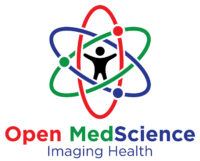Summary: The triage process serves as the foundation of effective emergency and outpatient care in the NHS. It determines who receives treatment first, ensuring that patients with the most urgent needs are prioritised. However, the system faces increasing strain due to growing patient demand, workforce shortages, and inconsistent procedures across trusts. Enhancing triage requires a combination of technology, training, standardisation, and patient engagement. This article explores current challenges within the NHS triage process and outlines practical strategies to improve speed, accuracy, fairness, and patient satisfaction while supporting healthcare staff.
Keywords: NHS, triage, emergency care, digital health, patient safety, clinical prioritisation
Introduction
Triage, derived from the French word trier, meaning “to sort”, is a critical function within hospitals, particularly in Accident and Emergency (A&E) departments and outpatient services. It ensures that patients are assessed promptly, categorised based on the urgency of their condition, and directed to the appropriate level of care. In the UK, the NHS operates one of the world’s largest healthcare systems, treating millions of patients every year. As demand continues to rise, triage efficiency directly influences waiting times, clinical outcomes, and staff workload.
In many NHS hospitals, triage is conducted by experienced nurses using established guidelines such as the Manchester Triage System (MTS) or the Emergency Care Data Set (ECDS). However, pressures from overcrowding, insufficient staffing, and variable technological integration have created significant challenges. Improving the triage process is essential to delivering timely care, reducing patient risk, and maintaining staff wellbeing.
The Current State of Triage in the NHS
In the NHS, triage begins as soon as a patient arrives at an A&E department or urgent treatment centre. A trained nurse performs an initial assessment to determine each patient’s clinical priority. The Manchester Triage System classifies patients into five categories ranging from “immediate” to “non-urgent”, with corresponding target times for medical review.
Although the MTS has provided a structured framework since the 1990s, modern healthcare demands have evolved beyond its original design. Emergency departments now face a higher volume of patients presenting with complex multimorbidity, mental health crises, and social care needs. The COVID-19 pandemic intensified these challenges, exposing weaknesses in triage processes such as communication breakdowns, long waiting times, and inconsistent application of guidelines.
Furthermore, triage processes differ between NHS trusts. Some use digital triage systems integrated with electronic patient records, while others still rely on paper-based documentation. This variation affects data quality, decision-making, and the ability to share information across departments. The result is a system that functions, but often inefficiently, with preventable delays and errors.
Identifying the Challenges
Several key issues hinder the effectiveness of triage within NHS hospitals. The first is workforce pressure. Chronic staff shortages, particularly in emergency nursing, lead to fatigue and reduced capacity for thorough assessment. A single triage nurse may be responsible for assessing dozens of patients during peak hours, creating inevitable bottlenecks.
Another challenge is inconsistent training. While most triage nurses are experienced clinicians, their decision-making can vary due to differences in interpretation of guidelines or limited exposure to newer protocols. This inconsistency affects patient flow and can lead to both over-triage, where non-urgent patients are prioritised unnecessarily, and under-triage, where critical conditions are missed.
A third issue is technological disparity. Some hospitals have adopted advanced digital triage tools, including AI-supported systems that guide clinical decision-making, but many still operate manually. This inconsistency prevents standardisation and delays data sharing between departments.
Patient behaviour also influences triage efficiency. Many patients attend A&E for conditions that could be treated elsewhere, such as through GP services or NHS 111. This misdirection of demand leads to overcrowding, increasing waiting times for those with genuine emergencies.
Lastly, communication barriers—whether linguistic, cognitive, or emotional—can hinder accurate triage. Patients who cannot articulate their symptoms clearly or who present with anxiety may be harder to assess accurately, particularly in a busy environment.
The Role of Digital Transformation
Digital technology holds significant potential to modernise and streamline triage across the NHS. Electronic triage tools can provide structured prompts that guide clinicians through symptom assessment, ensuring consistency and accuracy. These tools can integrate with existing electronic health records, allowing instant access to a patient’s medical history, allergies, and previous admissions.
Artificial intelligence and machine learning are beginning to play a role in early triage. AI systems can analyse presenting symptoms, vital signs, and demographic data to suggest a preliminary urgency score. While these systems do not replace clinical judgement, they can assist by highlighting red flags and prioritising patients automatically when human capacity is limited.
Virtual triage platforms, such as those used in NHS 111 online services, can help reduce hospital pressure by directing patients to the most appropriate care setting before they arrive. A patient reporting mild symptoms can be advised to visit a pharmacist or GP, while those with concerning symptoms can be directed straight to A&E.
Another benefit of digital triage is improved data collection and analysis. With uniform digital records, hospitals can monitor performance metrics such as waiting times, accuracy rates, and patient outcomes. This data can then inform policy decisions and identify areas for improvement.
However, technology is not a solution in isolation. Implementation requires reliable infrastructure, staff training, cybersecurity safeguards, and integration with existing NHS systems. Digital inequality must also be addressed to ensure that patients without internet access or digital literacy are not disadvantaged.
Enhancing Workforce Capacity and Training
Triage depends heavily on the skill and judgement of frontline staff. Improving the triage process, therefore, requires targeted investment in workforce development. Consistent training and professional development programmes are essential to maintain high standards of clinical assessment.
Simulation-based training can help triage nurses and doctors practise decision-making in realistic scenarios. These exercises enhance clinical reasoning, teamwork, and communication under pressure. Periodic revalidation of triage competencies can ensure that staff remain familiar with current protocols, including updates to the Manchester Triage System or new NHS England guidelines.
Expanding workforce capacity is equally crucial. Hospitals can consider deploying Triage Support Assistants or Clinical Navigators who perform initial administrative checks, freeing clinicians to focus on assessment. This model, already used in some NHS trusts, has been shown to reduce triage waiting times and improve patient flow.
Introducing rotational triage roles can also help distribute workload and prevent burnout. Nurses from different departments could rotate into A&E triage on a scheduled basis, maintaining a broad skillset across the workforce while alleviating chronic staffing gaps.
In the long term, increasing recruitment and retention through competitive pay, flexible working arrangements, and supportive leadership will be fundamental to sustaining an effective triage workforce.
Standardising Processes Across the NHS
Variability between NHS trusts in how triage is conducted creates inconsistency in patient experience and outcomes. Standardisation would help ensure fairness and reliability, regardless of location.
National guidance could define core triage procedures applicable to all hospitals, including specific time targets, documentation standards, and escalation pathways. Digital triage platforms should adopt a standardised data structure to facilitate interoperability among systems and departments.
The Manchester Triage System remains the most widely used tool, but there is room for refinement. Introducing updated algorithms that account for modern challenges—such as multimorbidity, frailty, or mental health emergencies—would improve sensitivity and specificity. For instance, elderly patients presenting with mild symptoms might currently be under-triaged despite high risk due to comorbidities. A modernised system could incorporate weighted scoring that accounts for these factors.
Cross-department collaboration is equally vital. Emergency triage should link seamlessly with inpatient and outpatient triage processes. For example, referrals from A&E to medical assessment units should be supported by shared digital records and consistent categorisation criteria. This would prevent duplication and ensure patients move efficiently through the care pathway.
Reducing Unnecessary Attendances Through Public Education
A significant portion of A&E visits involve non-urgent cases that could be managed through other NHS services. Educating the public about when and how to use healthcare resources is central to improving triage efficiency.
Campaigns promoting NHS 111, pharmacies, and urgent treatment centres can help redirect patients away from overcrowded emergency departments. Many people still perceive A&E as the fastest route to care, even for minor issues. Public information initiatives, supported by digital tools such as symptom checkers, can help correct this misconception.
Engagement with community organisations, schools, and workplaces can further reinforce awareness. Local initiatives could focus on teaching basic health literacy—understanding symptoms, self-care, and when to seek professional medical help.
Feedback mechanisms can also support public understanding. For instance, patients redirected from A&E to alternative services could receive a short digital explanation outlining why that decision was made. Over time, such communication fosters trust in the triage system and encourages appropriate service use.
Improving Communication and Patient Experience
An effective triage process is not solely about clinical efficiency but also about patient experience. For many individuals, triage represents their first point of contact with hospital staff. How they are received and informed can significantly influence their perception of care.
Communication training is, therefore, as vital as clinical skill. Triage nurses should be supported to deliver clear explanations of waiting times, prioritisation, and next steps. Empathetic communication reduces patient frustration, particularly when waiting times are long.
Translation and interpretation services should be readily available for non-English speakers to ensure assessments are accurate. Similarly, accessible information should be provided for patients with hearing impairments, learning disabilities, or cognitive decline.
Physical environment also plays a role. Comfortable waiting areas, visible information boards, and dedicated staff to update patients about delays can greatly improve satisfaction. Even small measures, such as ensuring privacy during assessment, contribute to a more respectful and patient-centred triage experience.
Integrating patient feedback into triage evaluation is equally important. Routine collection of satisfaction data allows hospitals to identify recurring issues and implement improvements. This feedback loop strengthens accountability and fosters a culture of continuous improvement.
Integrating Primary and Secondary Care Pathways
Improving triage efficiency also depends on how well hospitals interact with other parts of the healthcare system. Effective coordination among primary care, community services, and hospitals can prevent unnecessary admissions and streamline triage.
Shared digital records, such as those enabled by the NHS App and electronic prescribing systems, allow triage nurses to access vital patient information instantly. When a GP referral is received, having full visibility of previous consultations, medications, and test results supports quicker and safer triage decisions.
Hospital triage teams could work more closely with community-based rapid response units or virtual wards, which provide hospital-level care at home. Patients assessed as stable could be referred directly to these services, bypassing the need for unnecessary admission.
Integrated care boards (ICBs) can play a leadership role in aligning triage protocols across regional healthcare providers. This would ensure consistent standards and reduce fragmentation between services.
The Role of Data and Continuous Improvement
Data is at the heart of improving triage. Accurate recording of triage decisions, waiting times, and patient outcomes allows for ongoing monitoring and evaluation. Hospitals can use this data to identify peak demand periods, assess resource allocation, and pinpoint recurring bottlenecks.
Predictive analytics can help anticipate surges in demand based on historical patterns or external factors such as seasonal illness trends. This enables hospitals to plan staffing levels and resources proactively rather than reactively.
Audits and peer reviews of triage cases can ensure quality assurance. When discrepancies are found between triage categories and eventual diagnoses, lessons can be learned to refine clinical judgment and protocols.
National data sharing would further enhance improvement. The NHS could establish a central triage performance database, enabling comparisons between trusts and encouraging the dissemination of best practice. Transparency in performance metrics would motivate continuous progress.
Conclusion
Improving the triage process in UK NHS hospitals requires a comprehensive, multi-layered approach. It involves embracing digital transformation, investing in staff training, standardising procedures, and strengthening communication with both patients and primary care providers. The objective is not merely faster assessment but smarter, fairer, and safer prioritisation.
An effective triage system should combine clinical expertise with technological support to make accurate, data-driven decisions. It must also remain patient-centred, ensuring that compassion and clarity accompany every clinical judgment.
By addressing workforce challenges, adopting consistent digital solutions, and engaging the public in understanding appropriate service use, the NHS can create a triage process that reflects the values of equity, efficiency, and excellence. In doing so, it can enhance patient outcomes, relieve pressure on emergency services, and build a more resilient healthcare system for the future.
Disclaimer
This article is provided for informational and educational purposes only. It does not constitute medical, clinical, or legal advice and should not be relied upon as a substitute for professional consultation. The views expressed are those of the author and do not necessarily reflect the opinions or policies of the NHS, its trusts, or associated organisations. While every effort has been made to ensure accuracy at the time of publication, Open MedScience accepts no liability for any errors, omissions, or outcomes arising from the use of this information.
You are here: home » diagnostic medical imaging blog »



